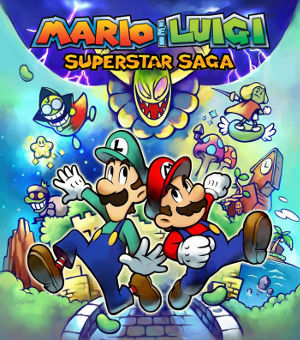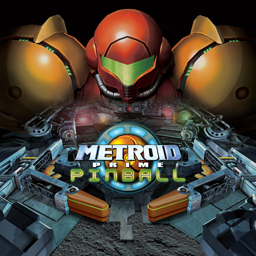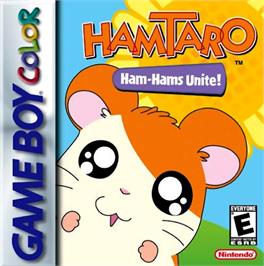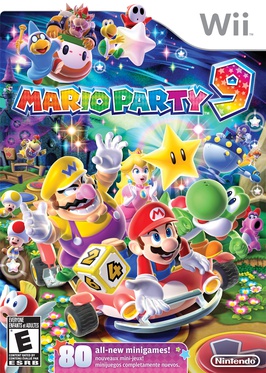
Hamtaro, known in Japan as Trotting Hamtaro, is a Japanese manga and storybook series created and illustrated by Ritsuko Kawai about a hamster. The manga was serialized in Shogakukan's "Shougaku Ninensei" magazine in April 1997; more Hamtaro stories would later be added into the other grade-level magazines, as well as in Ciao. The series focuses on a hamster named Hamtaro, who has a variety of adventures with other hamsters known as the "Ham-Hams". Viz Media published the manga adaptations and storybooks in English.

Mario Party 5 is a party video game developed by Hudson Soft and published by Nintendo for the GameCube. It is the fifth installment in the Mario Party series and the second game in the series to be released for the GameCube. It was first released in North America and Japan in November 2003, followed by Europe a month later. The game is set in the fictional Dream Depot, consisting of seven game boards. The single-player "Story" mode involves the player winning multiple games against the Koopa Kids to prevent Bowser from conquering the Dream Depot. The main multiplayer game mode consists of four characters from the Mario series playing a board game, with each board having a set theme. The game also features several minigames, which are played after every set of turns. Mario Party 5 introduces the "Super Duel" mode to the franchise, which requires players to assemble and control custom made battle vehicles which can be used in combat against other machines. The game features ten playable characters, with playable debuts to the series from Toad, Boo, and Koopa Kid.

Mario & Luigi: Superstar Saga is a 2003 role-playing game developed by AlphaDream and published by Nintendo for the Game Boy Advance. It was re-released for the Wii U's Virtual Console in 2014, Nintendo Switch Online Service in 2023, and remade for the Nintendo 3DS as Mario & Luigi: Superstar Saga + Bowser's Minions in 2017. In the game, Mario and Luigi travel to the Beanbean Kingdom in order to combat Cackletta and Fawful, who stole Princess Peach's voice for the purpose of harnessing the power of a special artifact called the Beanstar.
The Slime series is a spinoff series of games from Dragon Quest featuring its Slime character. Three games have been released, the second of which, Dragon Quest Heroes: Rocket Slime, has been released in North America.

Wario World is a platform video game developed by Treasure and published by Nintendo for the GameCube. Part of the Wario series, it was released in Europe, North America and Australia in 2003 and Japan in 2004. The game's plot centers on Wario and his quest to regain his treasure and his castle from the evil gem, Black Jewel.
2003 saw many sequels and prequels in video games, such as Tony Hawk's Underground, Madden NFL 2004, NBA Live 2004, ESPN NBA Basketball, Saya no Uta: The Song of Saya, Final Fantasy X-2, Mario Kart: Double Dash, Mario & Luigi: Superstar Saga, Prince of Persia: The Sands of Time, Sonic Heroes, Postal 2, Star Wars: Knights of the Old Republic, Uru: Ages Beyond Myst, and WWE SmackDown! Here Comes the Pain. New intellectual properties included Beyond Good & Evil, Boktai: The Sun is in Your Hand, Call of Duty, Disgaea, Drakengard, Manhunt, PlanetSide, TrackMania, True Crime: Streets of LA, and Viewtiful Joe.

Super Mario 64 DS is a 2004 platform game developed and published by Nintendo for the Nintendo DS. It was a launch game for the DS. Super Mario 64 DS is a remake of the 1996 Nintendo 64 game Super Mario 64, with new graphics, characters, collectibles, a multiplayer mode, and several extra minigames. As with the original, the plot centers on rescuing Princess Peach from Bowser. Unlike the original, Yoshi is the first playable character, with Mario, Luigi, and Wario being unlockable characters in early phases of the game.

Giftpia, stylized as GiFTPiA, is a video game, developed by Skip Ltd. for the GameCube. It was released in Japan on April 25, 2003. Nintendo cancelled the North American localization of Giftpia. In English, the game would most likely be better understood as called "Giftopia" to represent the two words, gift and utopia.

Banjo-Kazooie: Grunty's Revenge is a 2003 platform game developed by Rare for Nintendo's Game Boy Advance (GBA). It is the third instalment in the Banjo-Kazooie series and takes place between the events of the Nintendo 64 (N64) games Banjo-Kazooie (1998) and Banjo-Tooie (2000). In Grunty's Revenge, the evil witch Gruntilda travels back in time to prevent the events of Banjo-Kazooie from happening, and the bear Banjo and his bird friend Kazooie set out to stop her. Grunty's Revenge retains the focus on collecting items and most of the other game mechanics from its predecessors, but is presented in 2D rather than 3D. Aside from the main game, players can also access minigames such as fishing and target shooting.
Super Smash Bros. is a crossover platform fighting game series published by Nintendo. The series was created by Masahiro Sakurai, who has directed every game in the series. The series is known for its unique gameplay objective which differs from that of traditional fighters, in that the aim is to increase damage counters and knock opponents off the stage instead of depleting life bars.

Metroid Prime Pinball is a pinball video game themed after the Metroid series. The game uses the graphical style and various story elements from Metroid Prime. It was developed by Fuse Games and published by Nintendo for the Nintendo DS in North America and Australia in 2005, in Japan in 2006, and in Europe in 2007. Metroid Prime Pinball uses the basic mechanics of pinball, along with typical pinball items. New mechanics are introduced, such as wall jumping and the ability to fire weapons. The Nintendo DS's touchscreen can be nudged with a finger to alter the pinball's trajectory while in motion.

Hamtaro: Ham-Ham Heartbreak is a video game in the Hamtaro game series for Game Boy Advance developed by Pax Softnica and published by Nintendo, as the sequel to Tottoko Hamutaro: Tomodachi Daisakusen Dechu and Hamtaro: Ham-Hams Unite!. It was the second Hamtaro game released in America and Europe, but the third released in Japan. It was released in Japan on May 3, 2002, in North America on April 8, 2003, in Australia on May 30, 2003, and in Europe on June 27, 2003. Hamtaro: Ham-Ham Heartbreak was followed by Hamtaro: Rainbow Rescue.

Hamtaro: Ham-Hams Unite! is an adventure video game developed by Pax Softnica and published by Nintendo for the Game Boy Color handheld video game console. It is based on the Hamtaro anime and features much of the same characters. It launched in Japan in 2001, and later came to North America and Europe in 2002 and 2003 respectively. It was the final video game published on the Game Boy Color by Nintendo. Players control the hamster Hamtaro, who is tasked with gathering his friends and returning them to the clubhouse as well as collecting words missing from the Hamchat dictionary.
Chihiro Fujioka is a video game designer and composer, as well as rock drummer. He has worked at Xtalsoft, Square, and AlphaDream where he is primarily known for directing Super Mario RPG as well as his involvement in several Mario & Luigi games. He is currently a member of Earthbound Papas, a band led by Nobuo Uematsu.

MySims Agents is a 2009 mystery life simulation video game published by Electronic Arts. The fifth instalment in the MySims series, it was released in Europe on September 25, 2009, and in Australia on October 5, 2009 for both the Nintendo DS and the Wii. It was slated for release on June 16 in North America for both consoles, but was instead released on September 29. In the Wii version, the player is tasked with solving several cases which help the player determine the evil plot of the game's antagonist, while unlocking additional features which are essential to completing the game. For the DS version, the player has to take part in several minigames and interact with various townspeople to find a thief who attempts to steal a secret treasure.

Mario Party 9 is a 2012 party video game developed by NDcube and published by Nintendo for the Wii. The ninth main installment in the Mario Party series, it was announced at E3 2011 and released in Europe, North America, and Australia in March 2012, followed by Japan a month later. It was the first game in the series not to be developed by Hudson Soft, which was acquired and dissolved by Konami on March 1, 2012, the day before the game's European release. Instead, development was taken over by Nintendo studio NDCube. This was also the final Mario game to be released on the Wii.

Tomodachi Collection,, is a social simulation video game for the Nintendo DS, released exclusively in Japan on June 18, 2009. A sequel, Tomodachi Life, was released for the Nintendo 3DS in Japan on April 18, 2013, and in North America and Europe on June 6, 2014.

Wii Play: Motion is a video game for the Wii console and the sequel to the 2006 game Wii Play. It was released in North America on June 13, 2011; Europe on June 24; Australia on June 30; and Japan on July 7, 2011.

Hamtaro is a series of video games based on the Hamtaro anime series.














